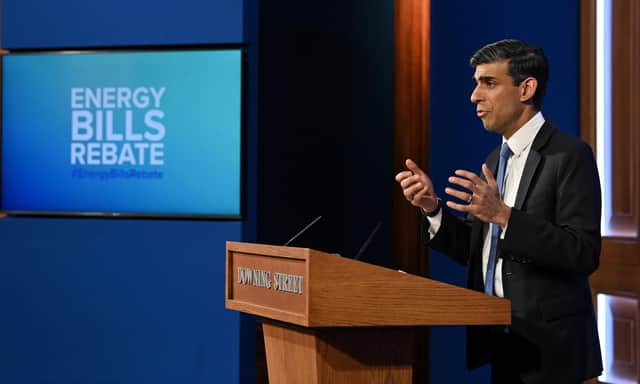Three in five St Helens homes have poor energy efficiency ratings


Three in five St Helens homes have energy efficiency ratings of Band D or lower, figures reveal, amid an energy crisis which is likely to see millions of people struggle to heat their homes.
The Government is being urged to make energy efficiency a national priority, after energy regulator Ofgem announced the cap on energy prices will increase by nearly £700 from April.
Advertisement
Hide AdAdvertisement
Hide AdEnergy Performance Certificates show how effective a home is at keeping heat in – with ratings from A (the most efficient) to G – the least, meaning residents have to spend more on energy bills to keep their homes warm.
Figures from the Office for National Statistics show 60% of dwellings in St Helens had an EPC rating of Band D or below in 2020-21.
This was higher than the average across England, of 58%.
Ofgem announced the energy price cap will rise to a record £1,971 for a typical household as gas prices soar to unprecedented highs.
This 54% increase will affect around 22 million households across Great Britain from the beginning of April, adding £693 to typical annual bills.
Advertisement
Hide AdAdvertisement
Hide AdIn response, Chancellor Rishi Sunak announced a £200 rebate on energy bills, which will have to be paid back, and a £150 reduction in council tax for millions in England.
But the Energy Saving Trust said the price cap rise – alongside higher living costs caused by further inflation – is "extremely worrying".
Mike Thornton, chief executive of the organisation, added: "As well as the need for immediate action and short-term support, the current crisis emphasises the importance of improving the energy efficiency of the UK’s housing stock in the long-term.
"Energy efficiency and more renewables are the best ways to protect everybody against volatile gas prices and rising bills in the long-term."
Advertisement
Hide AdAdvertisement
Hide AdThe figures also show the median annual energy cost in St Helens was an estimated £746 in 2020-21 – above the England average of £731.
Analysis by the Regulatory Assistance Project shows that without energy efficiency measures already installed in UK homes – among the oldest and least energy efficient in Europe – bills could rise to as much as £3,000 a year on average.
Jan Rosenow, director of RAP, said insulation is critical for meeting the country's net zero climate goals, saving money on energy bills, and insulating households from future price rises.
He added: “What is missing is a well-funded energy efficiency policy for all households that enables people to invest in making their homes more energy efficient."
Advertisement
Hide AdAdvertisement
Hide AdSeparate figures from the Department for Business, Energy and Industrial Strategy show an estimated 11,333 households in St Helens experienced fuel poverty in 2019 – the latest statistics available.
A household is considered to be fuel poor if they live in a property with low energy efficiency and would be pushed below the poverty line by housing costs and the energy bills needed to have a warm, well-lit home.
Mr Sunak said the Government's support will help around 28 million households with their rising energy costs over the next year.
He added: "We stood behind British people and businesses throughout the pandemic and it’s right we continue to do that as our economy recovers in the months ahead."